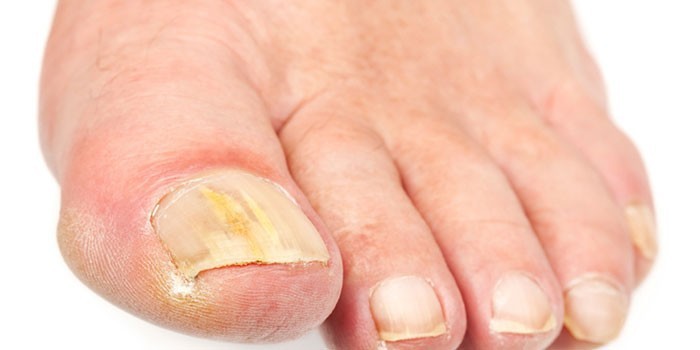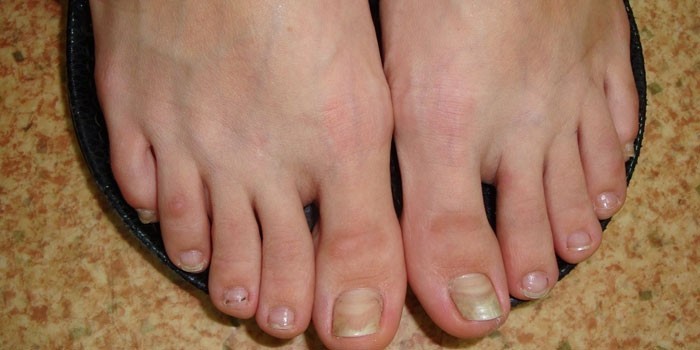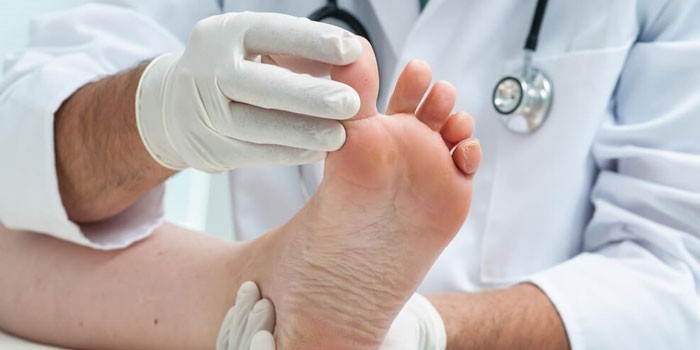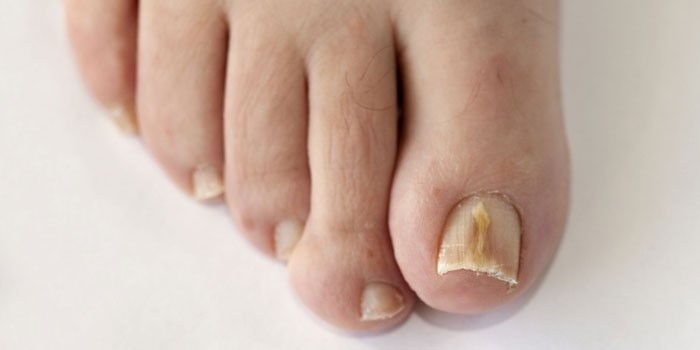This disease does not pose a direct threat to human life, but it can negatively affect the general well-being and health in general. For this reason, it is extremely important to have an idea of the primary signs, the characteristic symptoms of the fungus on the legs (feet, as well as nails) in order to take all the necessary measures in a timely manner to eliminate the unpleasant foot disease. Find out what clinical manifestations are accompanied by this or that form of the disease.
What is foot fungus
Recently, mycotic lesion of the feet has spread to such an extent that almost every fourth inhabitant of the planet can become infected with it. Such a sad statistic is mainly due to a decrease in the quality of shoe products, which directly affects the condition of the legs. So, the increased sweating of the feet, coupled with the poorly breathable materials of your favorite shoes, boots and other fashionable novelties, create all the conditions for the active reproduction of the fungus. The disease is transmitted from person to person. The risk of infection is especially high among family members of the infected person.
| 11111111111111111111111111 |
It is important to note that the disease often occurs after visiting public places: saunas, swimming pools, solariums. In addition, about 30% of diabetic patients suffer from mycotic lesions of the feet. The initial signs of toenail fungus in such patients appear as the underlying pathology develops. Sugar surges, as a rule, provoke an exacerbation of mycosis. The causative agent of the disease feels at ease in the body with reduced immunity, therefore it is very important to monitor its own condition and correct any deviations in time.
What does a fungus look like on the feet
Symptoms of the disease vary depending on the location of the lesion. Therefore, clearly understanding what a foot fungus looks like, you can take all measures to destroy the pathogenic agent even at the initial stages of the disease. So, if the feet are affected, deep cracks are found on the heels. When the nails are infected (onychomycosis), yellow spots of different sizes are visible in the thickness of the plates, hyperkeratosis of the subungual bed is observed. A crack with loose particles forms between the fingers. In this area and throughout the foot as a whole, severe itching is noted.

Symptoms of the squamous form of fungus on the feet
With such a lesion of the feet, the infectious focus, as a rule, is localized on the outer layers of the skin; in some patients, the proliferation of the nail plates is noted. In addition, pronounced symptoms of a squamous foot fungus are manifested by keratinization of the sole. The latter, over time, passes into areas of rough calcification with a further tendency to the emergence of deep heel cracks. The initial symptoms of fungus on the legs in the form of peeling of the skin, slight redness appear on one leg, but over time, the infection spreads to the other limb.
Dyshidrotic form of fungus on the legs
This diagnosis implies that bubbles appear on the surface of the patient's foot. After these peculiar blisters burst, erosion forms in their place. The situation is complicated by the fact that bacteria and viruses penetrate into the wound surface, which subsequently cause inflammation of the skin. Judging by the photo of the feet of patients suffering from this form of mycosis, it can be understood that the disease has a long course. In addition to the main symptoms of the disease, lymphadenitis often occurs against the background of a secondary infection, and the temperature rises.
Intertrigue form
This type of mycosis affects the space between the fingers. In the intertrigue form of the disease, cracks appear, surrounded by skin scales. Symptoms of a fungus on the feet usually develop as a result of squamous mycosis. So, existing cracks are replaced by superficial skin lesions in the form of erosion. This form of infection in most cases acquires a long chronic course. In the advanced stages of the disease, streptococcal infection is attached. At the same time, the appearance of the feet leaves much to be desired:
- edema is formed;
- areas of hyperemia (redness of the skin) are observed;
- purulent vesicles appear;
- an unpleasant odor appears.
This disease is characterized by negative changes in the nail plates. The pathological process begins with the appearance of spots and stripes of yellow color. In the future, the affected nail thickens, crumbles. At the same time, the feet look very depressing. The discoloration of the nail plate and its hyperkeratosis contribute to the fact that the patient develops many complexes, which can be dealt with only if the fungus is cured. In this regard, it is important to note that the duration and nature of the course of therapy depends on the form of onychomycosis, which can be:
- hypertrophic - involves a change in the color of the nail, its deformation and thickening;
- moldy non-dermatophytic - does not develop independently, but only in the presence of symptoms of concomitant nail diseases;
- atrophic - characterized by complete destruction of the nail plate.

Candidal fungal infection of the feet
This form of the disease is latent. For this reason, only a specialist will help you answer the question of how to recognize a fungus on the feet caused by yeast-like organisms. At the first signs of infection, you should immediately consult a doctor. A dermatologist will help determine the extent of the damage and tell you how to effectively prevent the spread of fungus to healthy nails. It is important to know that the candidal form of mycosis is manifested by the following symptoms:
- hyperemia of the skin;
- the presence of swelling at the site of the lesion;
- the formation of small abscesses and vesicles;
- the presence of severe itching.
The first signs of nail fungus
The initial symptoms of infection are manifested by a slight change in the shade of the nails. In this case, the patient grows dull or slightly yellowish plates. The primary signs of fungus on the legs often do not cause concern and are attributed to insufficient processing, which allows the pathological process to spread unhindered to healthy areas. In most cases, the infection affects the big toes, but it is not uncommon for onychomycosis to affect all of the patient's fingers.
White bloom on the legs
This symptom is evidence that a person is sick with candidal mycosis. The clinic of the disease begins with peeling of the skin. Subsequently, the dermis exfoliates and turns from scales into white flakes, which, falling off, create a "dust effect" on the legs. Something similar can be observed in the elderly, whose immunity is unable to resist the spread of infection.
Diagnostics
The external symptoms of foot fungus are nonspecific. Specialists qualify pathological changes in the nail plate or the skin of the foot only as the occurrence of a painful condition, the cause of which must be established. So, to confirm the preliminary diagnosis, the doctor gives the patient a referral for the following laboratory tests:
- microsporia;
- cultural research;
- DNA diagnostics.

Treatment
In the early stages of infection with a fungal infection, the use of external antimycotics is justified. It is important to note that more than 70 clinical studies conducted on the territory of the Russian Federation have confirmed the high efficacy of terbinafine-based drugs. In addition, with obvious symptoms of mycosis, it is recommended to use fungicidal foams, ointments and gels. In the presence of extensive lesions, systemic therapy is performed, which involves oral administration of antimycotics.
Recently, getting rid of mycosis has become much easier with the help of a medical pedicure. This procedure is carried out using modern equipment under conditions of absolute sterility. Photos of patients' feet before and after a hardware pedicure session are very impressive. With all this, it is often necessary to surgically remove the infected area, which in most cases is fraught with a dyshidrotic form of leg lesions. Meanwhile, for systemic therapy of less advanced cases of the disease, the following treatment regimens are used:
- Classic - tablets must be taken daily throughout the course.
- Short - taking medications ends before the new nail grows back.
- Pulse therapy - the use of antimycotics is carried out at long intervals that significantly exceed the duration of the treatment course.
- Intermittent - taking medications is combined with short periods of rest from them.
Remember that therapeutic measures help to completely get rid of the annoying fungus only if all the recommendations of specialists for the prevention of mycotic lesions are followed. In doing so, special attention must be paid to the proper disinfection of shoes and socks. In addition, it is recommended from time to time to carry out preventive courses of combating foot fungus with special agents for topical application:
- Miconazole;
- Levorin;
- Ketoconazole;
- Nystatin.
Photo of symptoms of nail fungus
